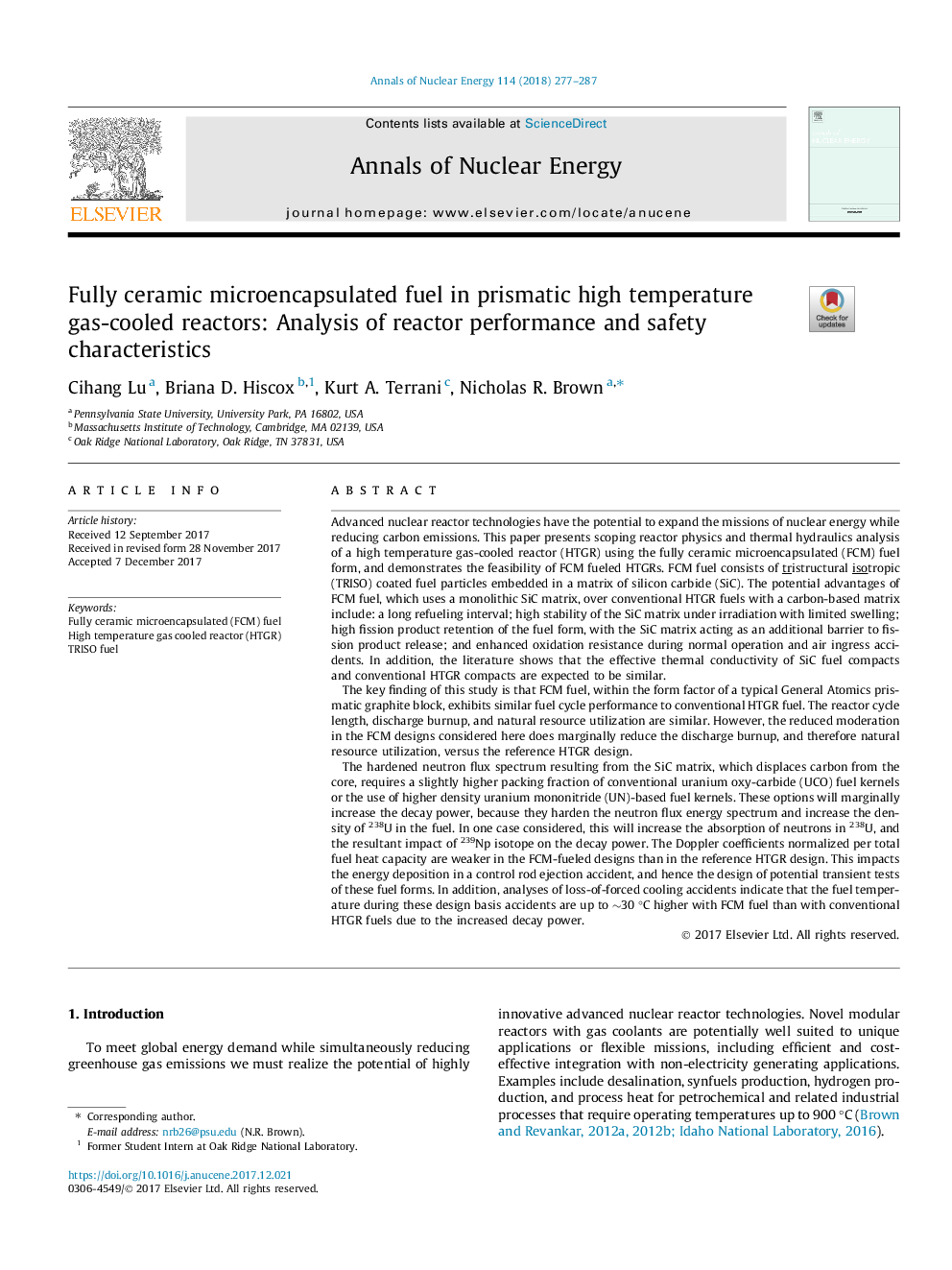| Article ID | Journal | Published Year | Pages | File Type |
|---|---|---|---|---|
| 8067157 | Annals of Nuclear Energy | 2018 | 11 Pages |
Abstract
The hardened neutron flux spectrum resulting from the SiC matrix, which displaces carbon from the core, requires a slightly higher packing fraction of conventional uranium oxy-carbide (UCO) fuel kernels or the use of higher density uranium mononitride (UN)-based fuel kernels. These options will marginally increase the decay power, because they harden the neutron flux energy spectrum and increase the density of 238U in the fuel. In one case considered, this will increase the absorption of neutrons in 238U, and the resultant impact of 239Np isotope on the decay power. The Doppler coefficients normalized per total fuel heat capacity are weaker in the FCM-fueled designs than in the reference HTGR design. This impacts the energy deposition in a control rod ejection accident, and hence the design of potential transient tests of these fuel forms. In addition, analyses of loss-of-forced cooling accidents indicate that the fuel temperature during these design basis accidents are up to â¼30â¯Â°C higher with FCM fuel than with conventional HTGR fuels due to the increased decay power.
Keywords
Related Topics
Physical Sciences and Engineering
Energy
Energy Engineering and Power Technology
Authors
Cihang Lu, Briana D. Hiscox, Kurt A. Terrani, Nicholas R. Brown,
